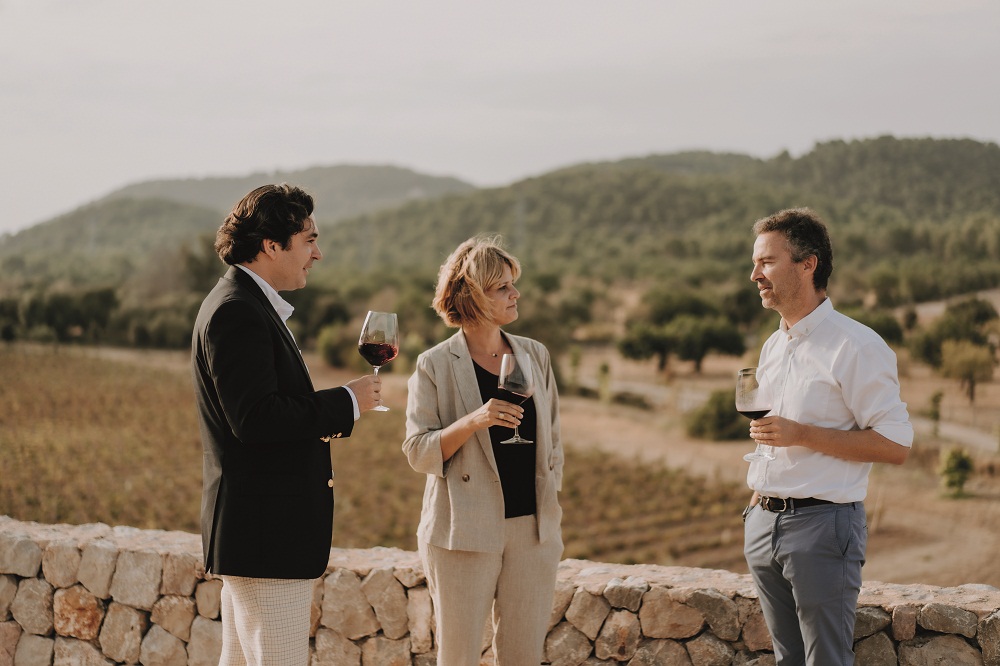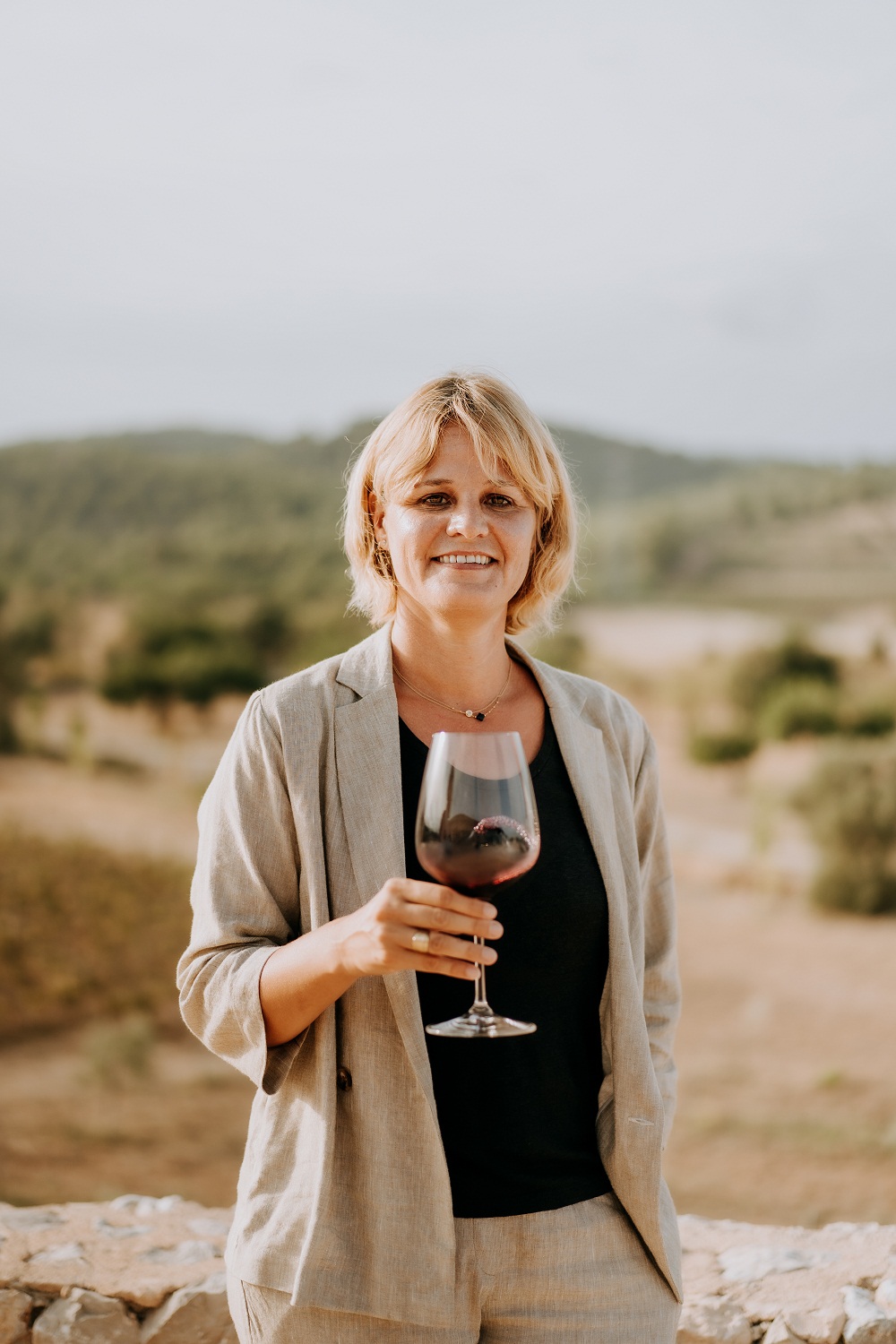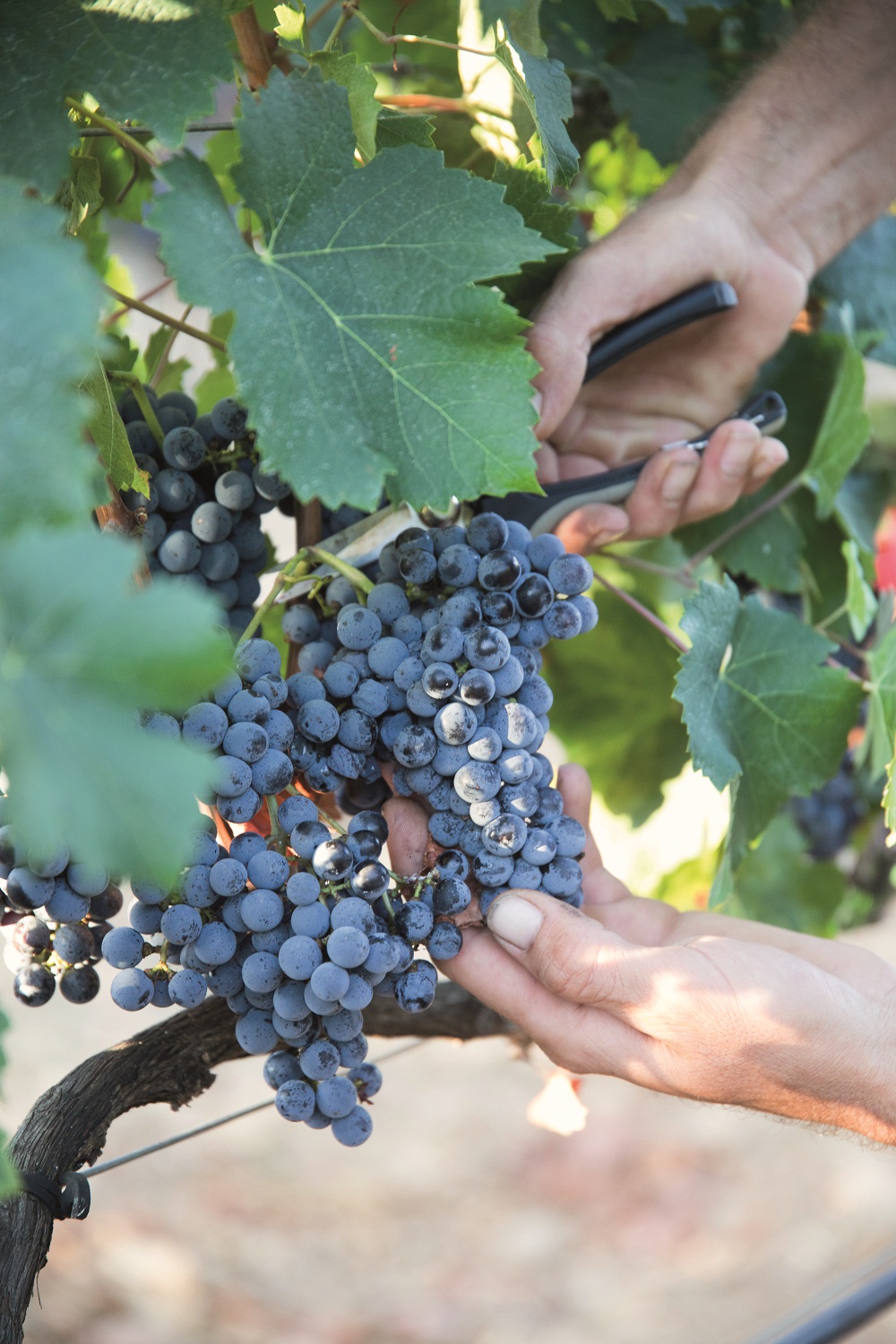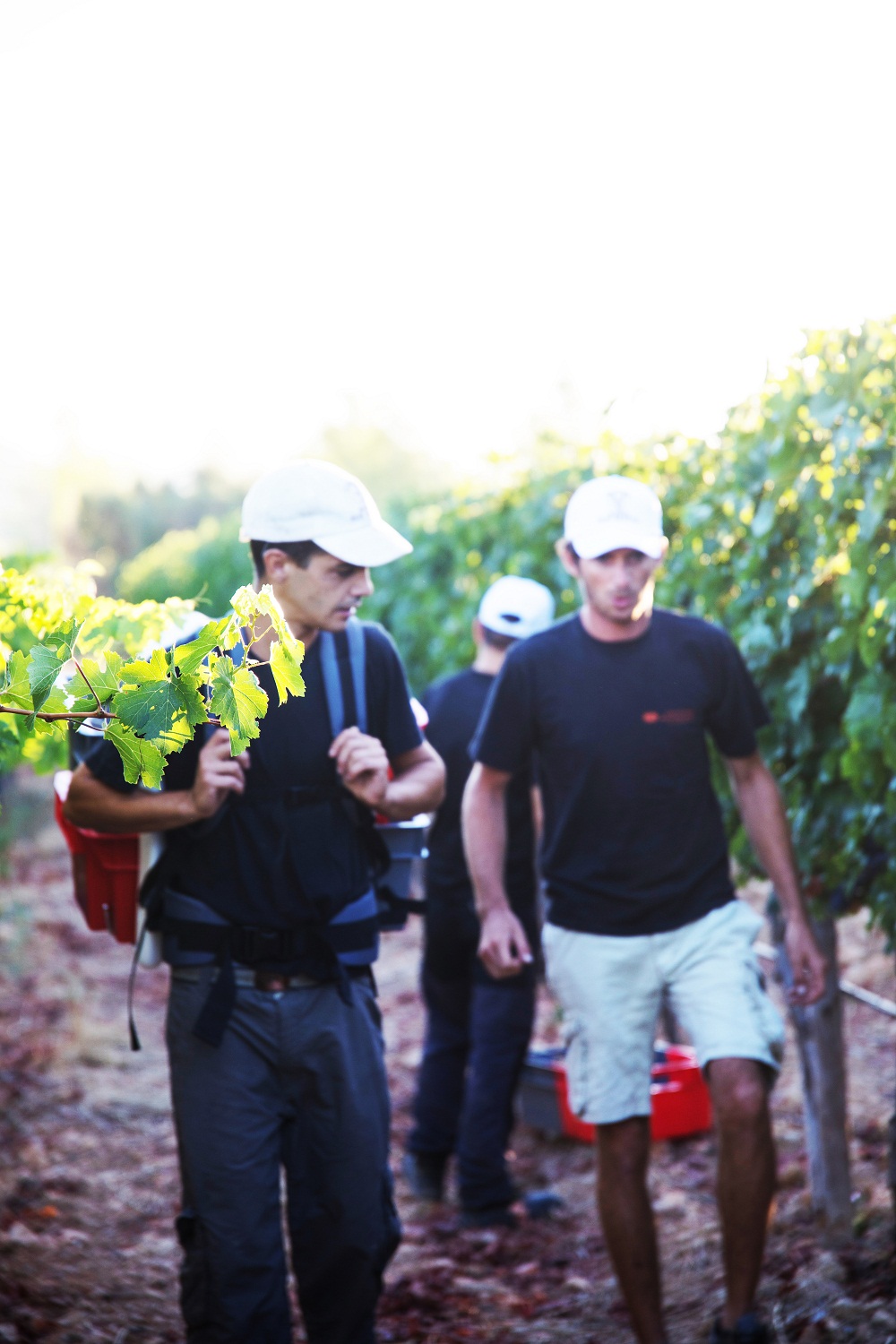Vineyards are returning to the pleasure island of Mallorca in a serious way, thanks to new players like Bodega Son Mayol where technical director Marie Barbé oversees a modern Bordeaux-styled estate.

Bordeaux native Marie Barbé grew up surrounded by wines, so much so that she chose to immerse herself in oenology studies in Bordeaux, graduating in 2002. Yet her career path was never a mainstream one; her wine projects have led her to New World (Chile) and even New Latitude regions such as Russia and India. Since 2016, the self-described epicurean and dreamer has found her favourite city to live in (so far): Palma de Mallorca, the island capital where she is 15 minutes away from her current role as technical director of Bodega Son Mayol.
With just 70 producers on the island, it’s a rare thing to find Mallorca wine outside of Spain, so it is testimony to Bodega Son Mayol’s reputation and noexpense-spared start that it has already been picked up for distribution in Singapore by Bottles & Bottles. Barbé sheds more insights into how the estate has achieved so much since it started in 2008.

THE ROOTS OF THE STORY
With its enviable location in the Mediterranean trade route, Mallorca has thrived under centuries of rule by Phoenicians, Romans, Byzantines, and finally the Kingdom of Aragon, under which it became part of the Catalan empire. Wines flourished up till the 1890s, when the phylloxera louse killed off most of the 30,000 hectares of vines on the island. It was only as recent as the 1990s that a resurgent interest in quality winemaking started bringing up the number of vineyards again, to over 2,500 hectares. That still represents less than 1% of the farming land available, and a far cry from its boom over a 100 years ago.

Bodega Son Mayol was established in 2008 by a Swiss entrepreneur, who stays out of the limelight. The spacious estate is home to vineyards, olive trees and a herd of Aberdeen Black Angus cattle – somewhat rare on the island, which now has a waiting list for its meat. Its location in Establiments was formerly not known for wine, but legendary Bordelaise consultant Patrick Léon (who passed away in 2018) was on hand to oversee the grape planting and wine elaboration, identifying its initial 60 acres of vineyards across 35 microclimates.

Barbé first met Léon for the Lefkadia wine project in Russia, and counts him as a mentor and friend. “I think what worked well between us was the same vision of an organised and rigorous work and the same sense of tasting,” she recounts. “Winemaking is a process of creation but it requires a lot of organisation. This is because you must have an eye on the vineyard to get the perfect maturity of the grapes, an eye on the weather and an eye on the winemaking process. And a slightly maniacal attitude in terms of hygiene.” The working relationship continues with Patrick’s son Bertrand, who’s taken over as consultant while also continuing his other projects with Chateau d’Esclans and Chateau Les Troix Crois.
AN INTEGRATED APPROACH
“I’ve always been interested in new challenges, not in the preestablished things,” says Barbé. At Bodega Son Mayol, that meant not just a new terroir to establish but also a brand new winery and cellar with every up-to-date technical advancement. Taking pride of place is the gravity-led three-story contemporary waveform bodega, designed by Spanish architect Javier Campos with cuttingedge, eco-friendly technology.

Explains Barbé, “Gravity was important for the reception of the grapes. As a winemaker, I believe that gravity at this stage is crucial (and even if the pumps are nowadays efficient), it is always better to go down than up so as not to cause pressure on the grapes. It is a natural rhythm of work in adequacy with the precision required by the actions on the wine.” Grapes are handpicked and handsorted before further optical sorting. With two-thirds of the bodega built underground, they also take advantage of natural thermal insulation to save even more energy, together with solar panels on the roof that generate 100,000KWh of energy annually. That’s more than enough for their use, so excess energy is fed back into the power grid. Meanwhile, grey water output is cleaned and recycled for watering the gardens.
In the vineyards, they practice integrated viticulture. “This means that our viticulture adapts to our terroir and changes according to the plot to best suit the conditions. We leave grass in the winter to work it mechanically in springtime; this allows us to avoid the erosion of our soils but then to control diseases and hydrous competition,” she elaborates. In very dry years, one of the challenges of viniculture on Mallorca, Barbé notes that they give a little water at the start of the season to avoid stress on key stages such as flowering or change of colour, but never for productivity gain. “We try to give water only to our young plants but, at the same time, cause a little stress so as not to make them dependent on water. We choose rootstocks that are resistant to drought.”
BLENDING IT RIGHT
There is a change of mentality in the wine industry, confirms Barbé. “Mallorca wants to produce typical wines with a strong identification of the Islands and is opening up to wanting to produce quality wines.” While some of the wineries are working mainly with indigenous island varieties such as Prensal (white) and Manto Negro, Callet and Fogoneu (reds), international varieties have also been on the rise.
Bodega Son Mayol’s focus on Bordeaux varieties — mainly Cabernet Sauvignon, Merlot and Petit Verdot — are due to Patrick’s founding influence. “With him, I learnt how to make not only good wines but great wines to age. When a wine is well done, it’s good. But there is a different class for higher-tier wines. This difference, as Patrick has taught me, is the capacity for ageing. This leads to the philosophy of Son Mayol to not only to create good wines, but also excellent wines with potential for ageing in bottles,” says Barbé. Temperature-controlled fermentation is done in wooden tanks, and all wines are aged in 100% French oak barrels for 12 to 18 months.

“My main task is organising the work of my team of 9 people, between the vineyard and the cellar. And depending on the time of year, I will be preparing the next plots for future plantations. The rest of my days are spent tasting the wines, visiting the vineyard, as well as administrative and commercial tasks.”
PREPARING FOR THE FUTURE
By 2023, the estate will have 40 hectares planted, so a lot of effort is spent on soil testing and plot preparation. “In a particular terroir, we prepare the soil for about five years. Two years to remove all the stones or rocks that we find with a special stone-picking machine. Then, we give it three years of rest before planting,” Barbe describes. “We are used to making several pits in the same plot before planting to define the different types of soil that the plot can contain. Depending on the results, we decide on the variety but above all on the rootstock that we will use to best adapt to our soil. Then we repeat these analyses every 5 to 10 years to see the evolution of the soil.”

The estate is starting production of Cabernet Franc and Mourvedre, to see if the varieties will work with their style – the results are looking good so far. This year, the bodega is also launching its new Rosé, using Merlot grapes. “It was important to define the style first before creating the wine. While the creation starts in the vineyard, I don’t separate my roles of technical director or winemaker.
I wear both hats in order to create the wines,” she enthuses. With a property this young, the next five years will be crucial to bring the maturity necessary for the vineyard to produce even higher quality, especially with the ageing of their Grand Vins. In the meantime, Barbé has fully immersed herself in the culture of the island, whether hiking in the mountains or discovering small coves in the summer. A small epicurean tip? Her new favourite pairing involves the Grand Vin 2016 with a steak from Son Mayol’s Black Angus. Seems like it’s just a matter of time before the world savours Mallorca anew.
